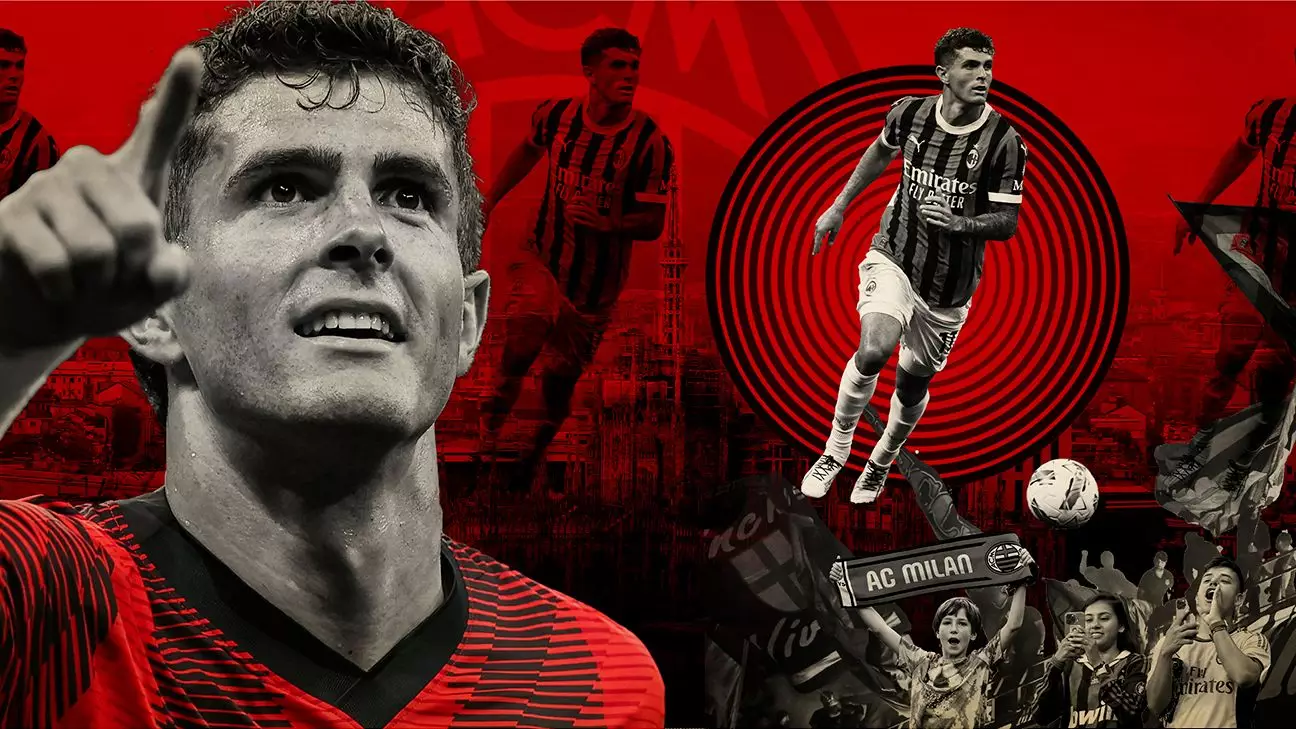Christian Pulisic, the American soccer prodigy, once again finds himself at a critical juncture in his career while playing for AC Milan. After a prolific stint where he contributed significantly to the team’s goal tally, leading them with an impressive 12 goal contributions, Pulisic still faces the daunting challenge of proving his worth afresh. This paradox reveals the often unpredictable nature of professional football, where even standout performances can lead to a precarious position on the pitch.
Despite being recognized for his high work ethic and dedication off the field, as noted by his former assistant coach who lauded him as “one of the best professionals” he has encountered, Pulisic’s position within the squad remains under intense scrutiny. His recent removal during a pivotal Champions League match against Feyenoord, where he was substituted just over an hour into the game despite an aggregate score of 1-1, showcased the ongoing struggles he faces to cement his place in the team’s evolving structure.
Pulisic is no stranger to positional changes. Throughout his time at Milan, he adapted to various roles, moving from his preferred left winger position—often occupied by Rafael Leão—to more central and right-wing roles according to the tactical preferences of his coaches. Ensuring flexibility in a player is typically seen as a strength; however, in Pulisic’s case, it raises questions about the strategic vision of the coaching staff.
When Paulo Fonseca was replaced as head coach, Pulisic’s role again shifted, exemplifying the transient nature of his involvement and the necessity of adaptability in modern football. This constant reshuffling can disrupt a player’s rhythm and affect their confidence, especially for a player who thrives when given the freedom to exploit space effectively.
Initially, under Fonseca, Pulisic was positioned in a No. 10 role, which allowed him to display his technical prowess in tight spaces. His ability to read the game and contribute both in attack and defense made him a crucial component in that system. However, with the arrival of new coach Sérgio Conceição and the subsequent signing of João Félix, who was stationed in the No. 10 role, Pulisic found himself reverting to a less favorable position on the right, which begs the question: is Milan truly utilizing their most productive player efficiently?
Critics argue that while Leão possesses immense talent, shifting Pulisic repeatedly—particularly when his No. 10 performances had shown promise—undermines the very fabric of team strategy. Leão’s talents might require space to flourish, but consolidating a team’s roster around its most effective players should take precedence. Pulisic’s contributions as an attacking solution seem to have been overlooked in favor of a less stable, potentially riskier approach.
The Stereotypes of Player Roles
The current discourse around attacking players suggests that they often exhibit a certain level of selfishness and lack of defensive discipline. Yet, Pulisic stands out as an example to challenge this stereotype. His willingness to contribute defensively, matched with a work rate that compels respect among teammates and coaches, positions him as a unique asset. While some stars fade in moments of tactical constriction, Pulisic’s performance remains steadfast, embodying the commitment expected in high-pressure situations.
However, there exists an inherent tension in his role as the team’s leading goal contributor. While his productivity in advanced positions has been commendable, it raises the question of whether a player of his caliber should be content with merely fitting into the tactical mold set by others. His professionalism is commendable, but would being less accommodating yield better results for both him and the team?
Pulisic’s current trajectory at AC Milan seems laden with complexity. While he undeniably remains a critical player in a squad filled with fluctuating talent dynamics, one cannot help but ponder his future. With Leão enjoying a prime position as the highest-paid player on the roster and João Félix potentially solidifying his place, Pulisic may find himself perpetually wedged out wide, striving to prove himself every step of the way.
As the season progresses, the question looms: how long can a player of Pulisic’s caliber exist in such a rotating role? Despite the undeniable statistics pointing to his effectiveness on the pitch, the evaluative lens often expands to include the player’s presence, visibility, and adaptability. Should he remain the “good egg,” or does he need to assert his request for a more suitable position to truly shine as the star he is becoming? Only time will reveal the answers to these hollow difficulties in the promising yet tumultuous journey of Christian Pulisic at AC Milan.

